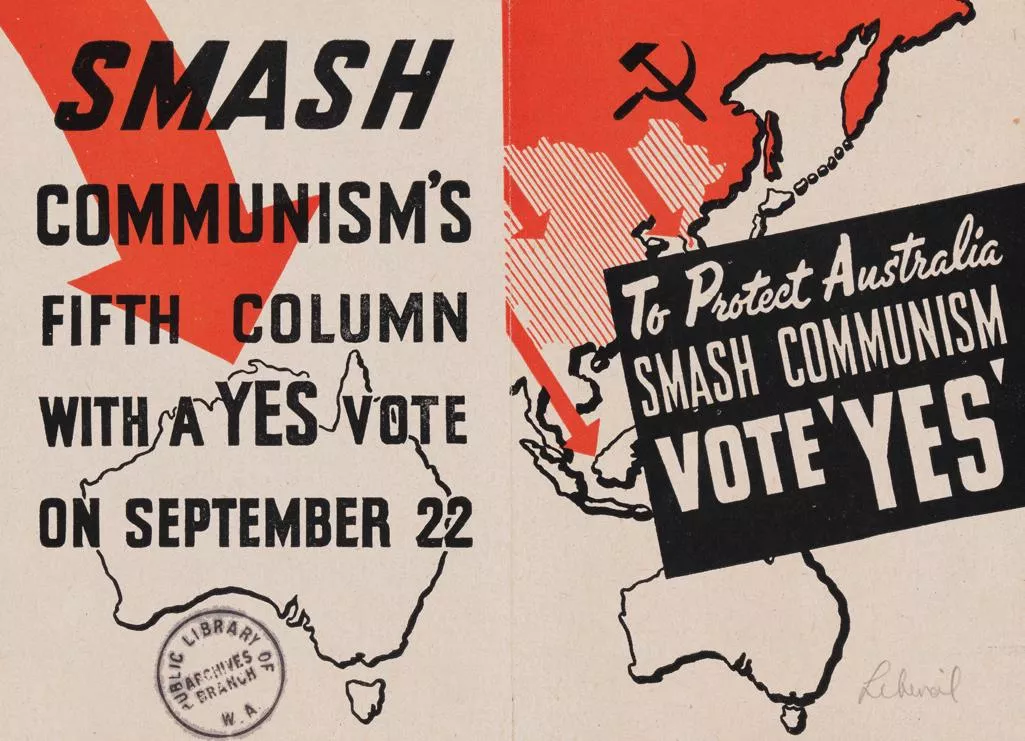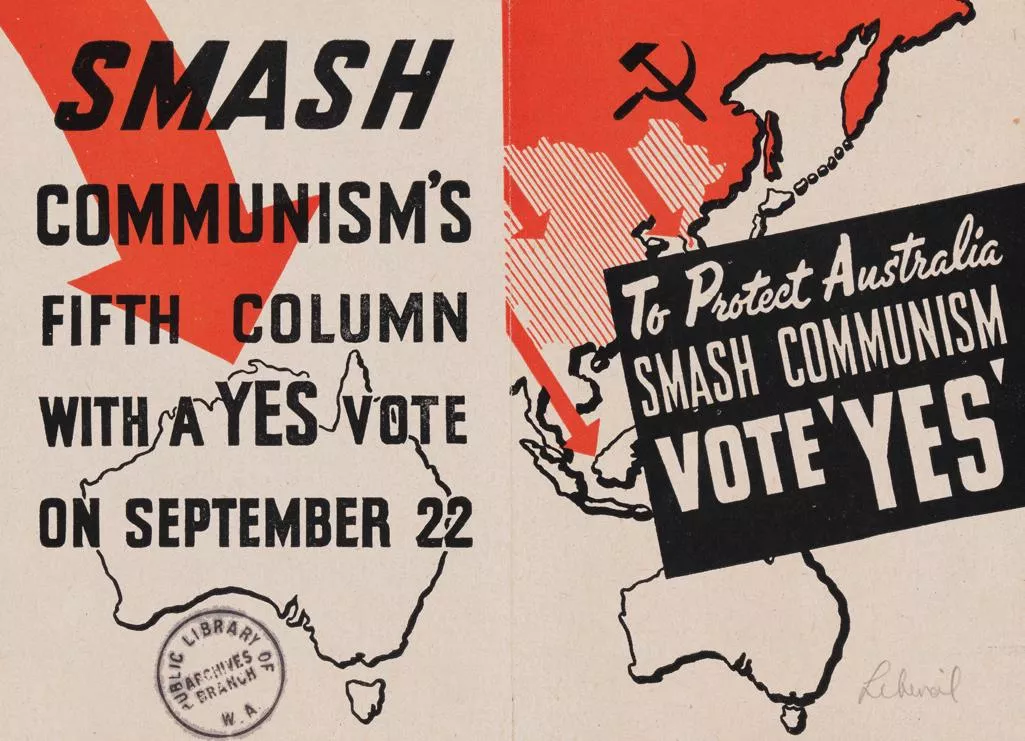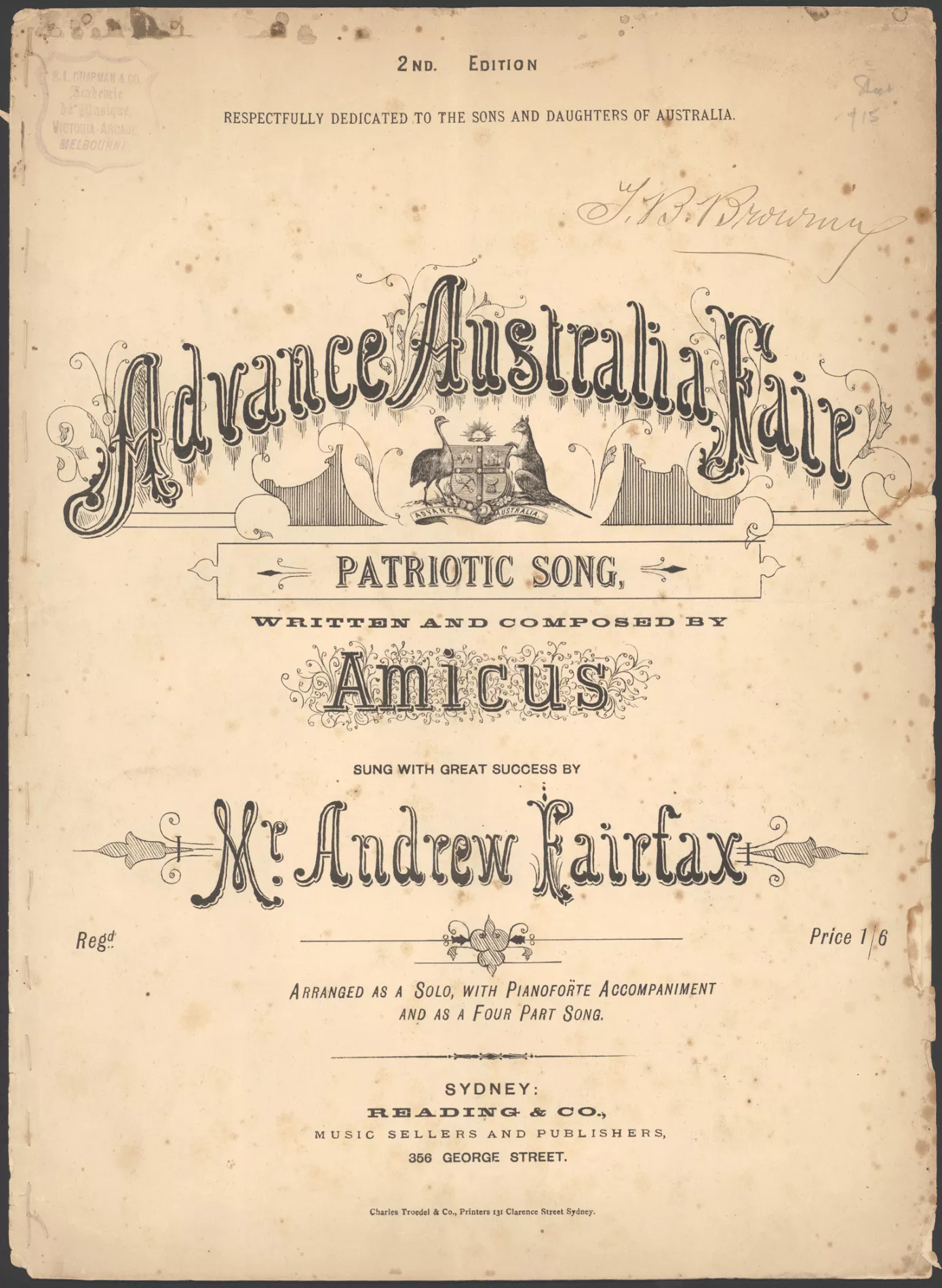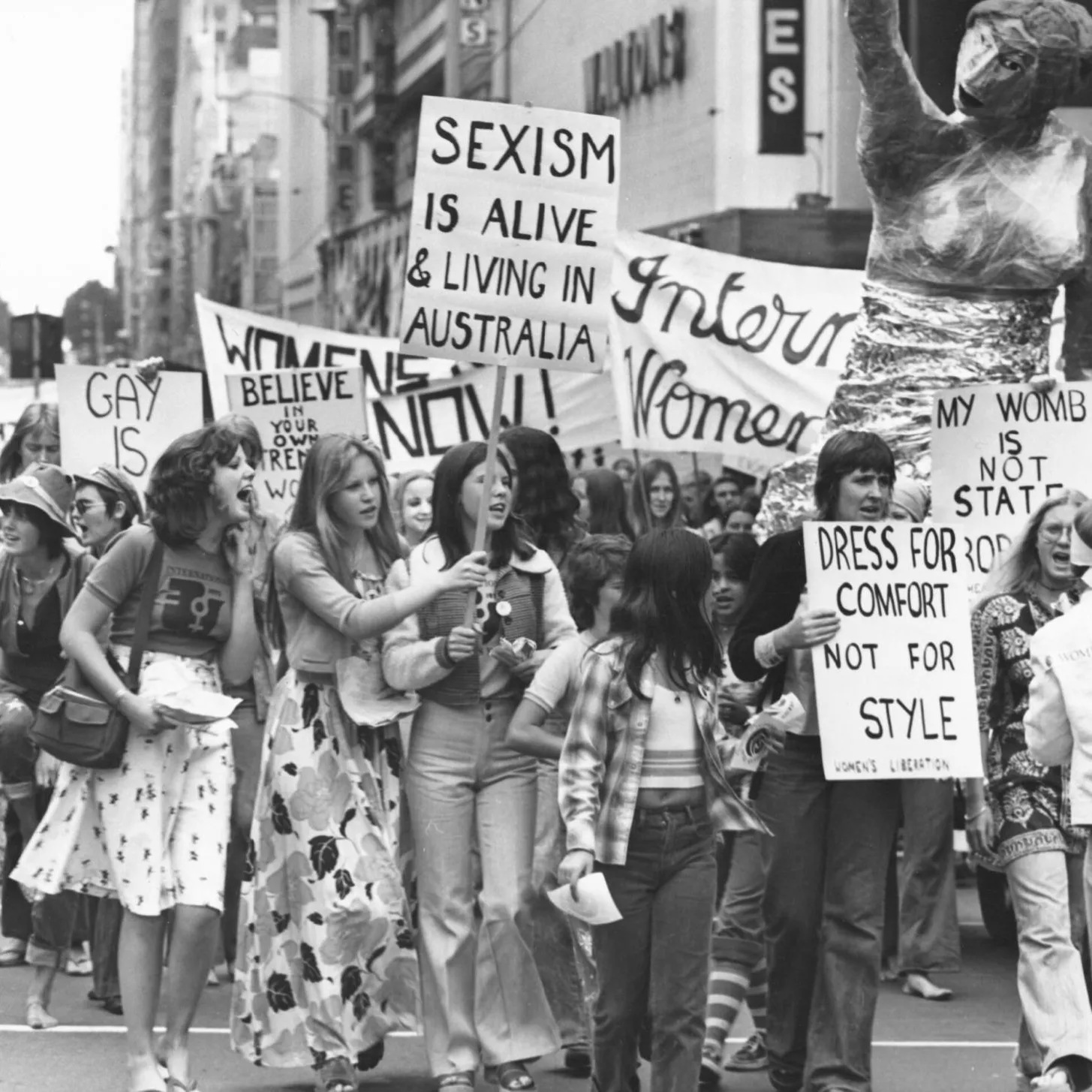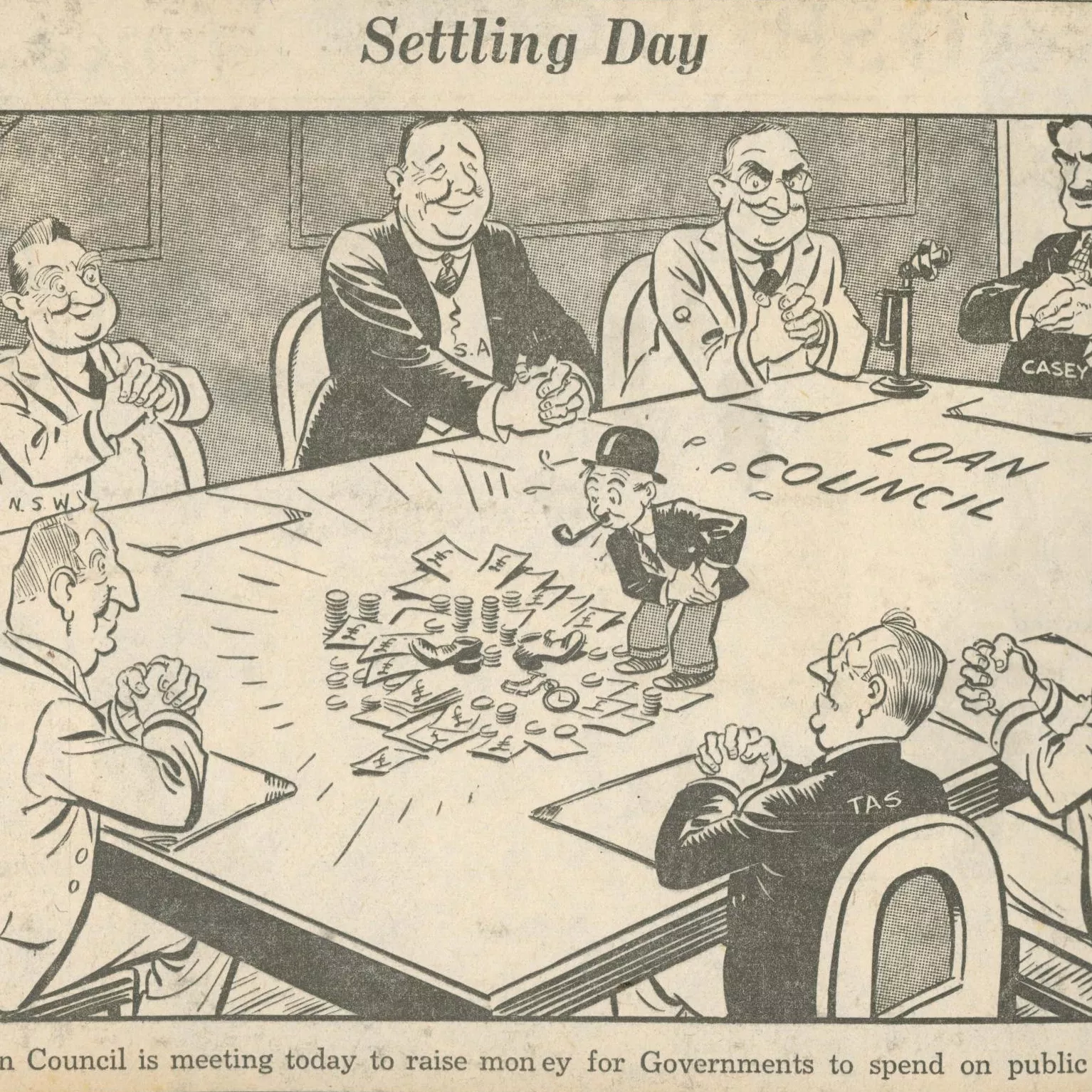1951: Communists and communism referendum
Reds under the bed
Date
22 September 1951
Question
Do you approve of the proposed law for the alteration of the Constitution entitled 'Constitution Alteration (Powers to deal with Communists and Communism) 1951'?
Result
A narrow majority of Australians voted NO and the proposal was rejected. The Constitution was not changed.
NSW
Yes: 865,838 (47.17%) , No: 969,868 (52.83%)
VIC
Yes: 636,819 (48.71%), No: 670,513 (51.29%)
QLD
Yes: 373,156 (55.76%), No: 296,019 (44.24%)
WA
Yes: 164,989 (55.09), No: 134,497 (44.91%)
SA
Yes: 198,971 (47.29%), No: 221,763 (52.71%)
TAS
Yes: 78,154 (50.26%), No: 77,349 (49.74%)
Total
Yes: 2,317,927 (49.44%), No: 2,370,009 (50.56%)
Prime Minister Robert Menzies thought so, and in 1951 he asked Australians to agree and give his government the power to ban the Communist Party of Australia.
It was the height of the Cold War, and many feared there would be an inevitable march of the Soviet Union across the world. Fears of communist influence in Australian trade unions were amplified by a series of major strikes in 1948 and 49, particularly in the coal industry. According to Menzies, these were an unacceptable threat to Australian economic security and its very existence as a liberal democratic power. Menzies and his Liberal/Country Party Coalition won power at the 1949 election, partly on a platform of outlawing the Communist Party on national security grounds.
The following year, the new Menzies government passed the Communist Party Dissolution Act 1950. The Act asserted the party was an 'unlawful association' and authorised the governor-general to declare a person to be a communist. Communists could not be employed by the Commonwealth or hold office in a labour union.
The response to the Act was swift. Opponents argued the Act abolished basic rights, including the right to have your case heard in public. The Communist Party challenged the law in the High Court. One of their lawyers was Doc Evatt, a senior Labor politician and former High Court judge.
The law was struck down six to one as a violation of the Constitution. And so Menzies took the question to the people – should the Constitution be changed to allow the government to make laws with respect to communists?
Public opinion was heavily divided, and the campaign was ferocious. Though Labor had originally supported the bill, they campaigned against constitutional change. Evatt, who at this time was opposition leader after Ben Chifley’s sudden death in June 1951, was the frontman for the 'no' case while Menzies and his government led the charge for the amendment. The atmosphere was heavily partisan, and much of the national media nailed their colours firmly to one mast or the other.
Ultimately, Australians decided 'no'. By the barest of margins, the proposed change was rejected and the Communist Party remained part of the political landscape until around 1990.
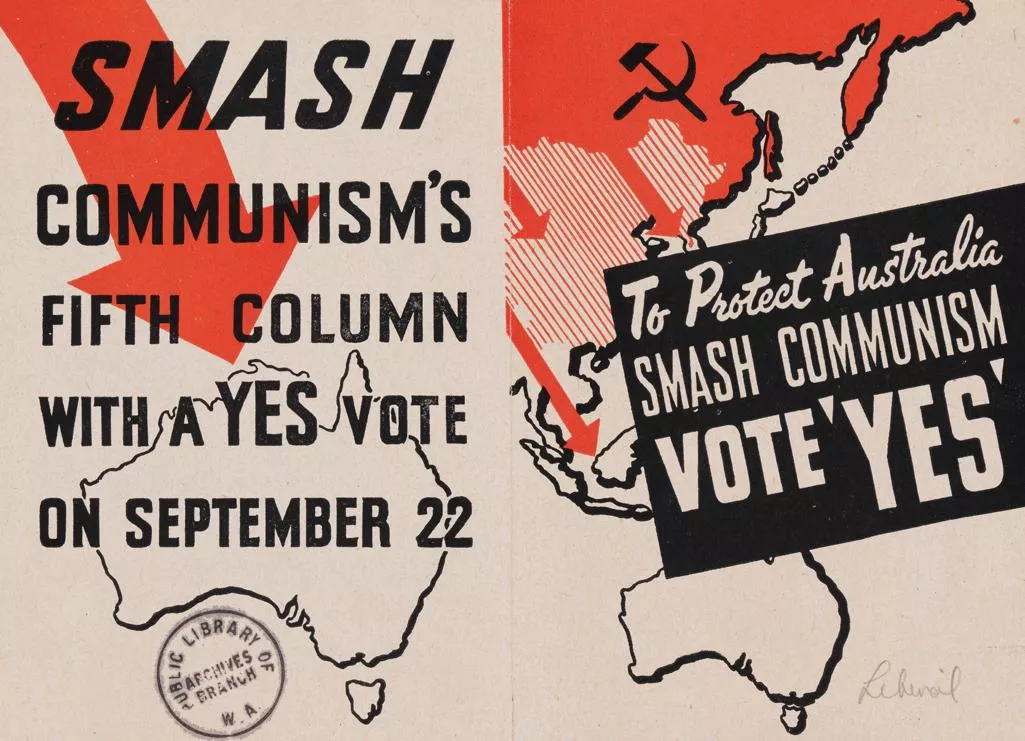
‘Yes’ campaign’s handbill, 1951. Campaigners leaned heavily on fears of Communism, especially in the wake of the establishment of the People’s Republic of China in 1949.
State Library of Western Australia
Extract from the official YES case
'Communist activity in Australia has become a grave menace to our industrial peace, to production, to national security and defence. It is the enemy of defence and progress; it is the friend of inflation and disorder.
Australian Communist leaders have worked their way into positions of leadership in key trades unions, such as those relating to Coal-mining [sic], Shipping, Waterside work, Iron-working [sic], and Transport.
Unless we can meet and defeat this conspiracy in the next year or two years, we may find ourselves driven into a defensive world war inadequately prepared, and with insufficient resources.
Doctor Evatt … argues that the Act violates basic principles of justice and of human freedom. It certainly does not! On the contrary, it is designed to give Australians freedom from subversive communist activity.
FOR THE SAKE OF OUR SECURITY, PEACE AND DECENT PROSPERITY OF OUR COUNTRY, WE ASK YOU TO VOTE YES.'
Source: Official 1951 referendum pamphlet
![‘All I want is the power to deal with these Reds!’ Will Dyson, [publication] 1951. Dyson depicted Menzies as an autocrat who wanted the power to ban and oppress his political opponents. ‘All I want is the power to deal with these Reds!’ Will Dyson, [publication] 1951. Dyson depicted Menzies as an autocrat who wanted the power to ban and oppress his political opponents.](/sites/default/files/styles/cropped/public/2023-09/menzies.png.webp?itok=1ba4oqde)
‘All I want is the power to deal with these Reds!’ Will Dyson, [publication] 1951. Dyson depicted Menzies as an autocrat who wanted the power to ban and oppress his political opponents.
Museums Victoria SH 901556
Extract from the official NO case
'In his very last speech, Mr. Chifley warned Australia against this Menzies referendum. You should heed the warning of this great statesman who gave his life to the service of Australia. Mr. Chifley was strongly opposed to Communism but he was convinced that the powers asked for would injure groups and persons who had no connection whatever with Communism.
Mr. Menzies keeps talking about Communism. It is a smoke screen to conceal his failure to halt Inflation and reduce the cost of living.
The Menzies Government is drunk with power and thirsts for still more power. Now is the time for you to stop Mr Menzies getting any more power. An emphatic "NO" majority will stop him before it is too late.
Consciously or unconsciously, the Menzies Government Is heading fast towards totalitarianism in Australia.
Play safe and preserve the Constitution as it now stands. Play safe and preserve the jurisdiction and authority of the High Court of Australia.'
Source: Official 1951 referendum pamphlet
Did you know...?
If there had been another 30,000 'yes' votes in Victoria or South Australia the amendment would have succeeded.

